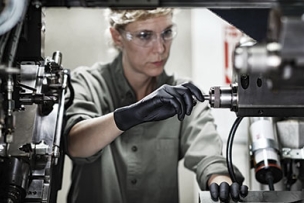Ansell is a global supplier of personal protection (PPE) equipment solutions designed for workers in a wide range of industries. Ansell's customers include businesses engaged in the Manufacturing, Agriculture, Healthcare and Scientific sectors, as well as many other business sectors. Ansell has developed a global presence that includes sales, operations and manufacturing sites in North America, Latin America, Europe and Asia and employs more than 15,000 people worldwide. Ansell's position as a market leader has evolved over more than 100 years of history and can be attributed to our history of providing innovative protection solutions to workers through a deep understanding of the worker experience.
Cut resistance in industrial work gloves is measured on a scale of either A1-thru-A9 based on the ANSI/ISEA 105-2016 standard or 0-to-5 or A-thru-F based on the EN388:2016 standard. It is important to understand the protection levels associated with each standard as well as the most appropriate levels for specific applications.
What does the ANSI/ISEA 105-2016 cut standard entail?
The cut resistance standard from the American National Standards Institute (ANSI) and International Safety Equipment Association (ISEA) became effective in North America in March 2016. The updated ANSI/ISEA 105-2016 standard, based on the ASTM F2992-15 testing method, measures cut resistance for Industrial work gloves on a 9-level scale of A1-to-A9. Updated from the ANSI/ISEA 105-2011 standard using a 5-level scale, the current standard allows for more accurate identification of protection in PPE.









Talk to Us!
Leave a reply
Your email address will not be published. Required fields are marked *